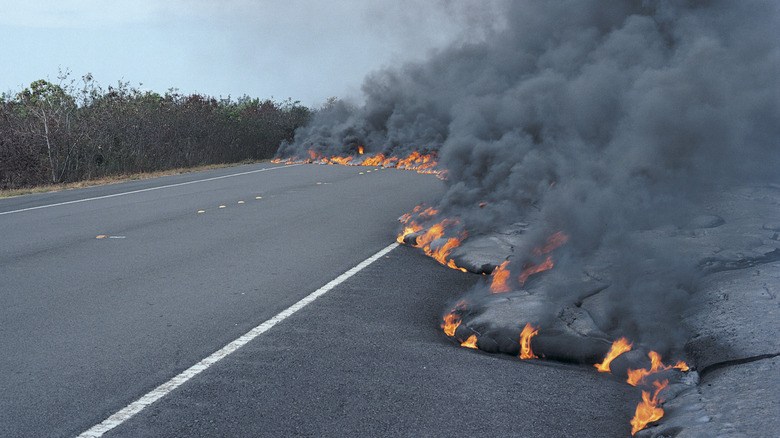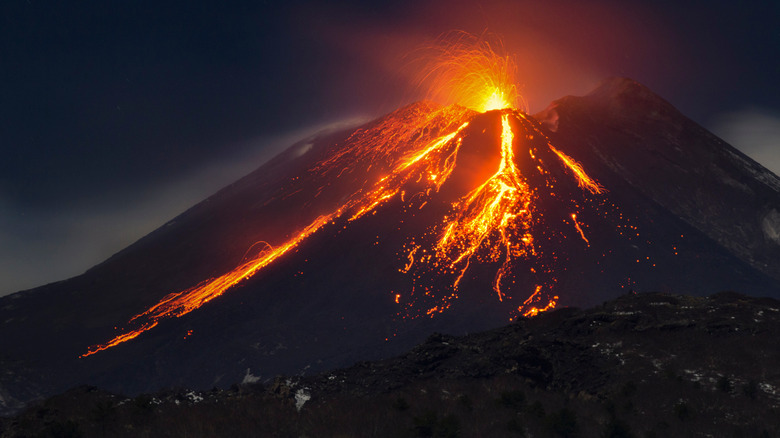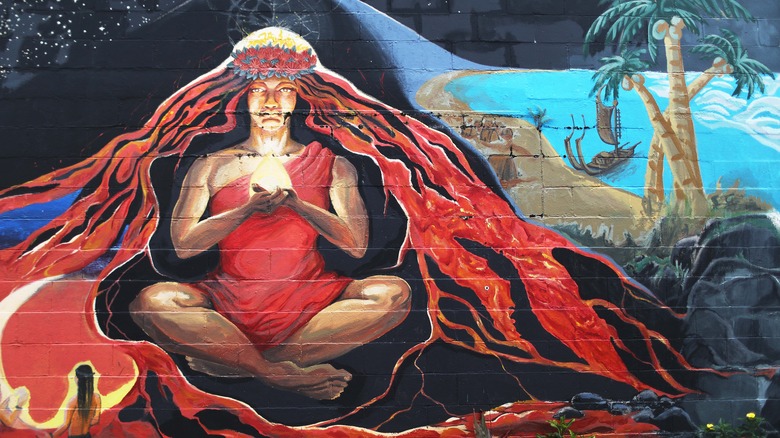Can Lava Be Diverted When It Flows Near Highly Populated Areas?
Erupting volcanoes pose incredible risks to the population. The Centers for Disease Control and Prevention (CDC) reports that destructive ash and gasses released from volcanoes can cause respiratory problems as well as irritate the eyes, nose, and throat. Gas clouds are also dangerous because they might contain poisonous substances such as carbon monoxide, carbon dioxide, and sulfur dioxide — all of which have the potential to suffocate people, animals, and even plants, per Britannica.
Besides being detrimental to your health, lava can damage property. Pyroclastic flows, otherwise known as glowing avalanches, are a threat because they can move up to 100 mph and can cover hundreds of miles, destroying everything they come in contact with (via Britannica). AccuWeather reports that it could take decades for land to recover from lava flow, depending on the climate and what kind of volcanic rock is left behind. This might have you wondering if there is a way to divert lava.
It's possible to divert lava
It's not only possible to divert lava — it's been done in the past. In 1973, seawater was pumped into the Eldfell volcano in Iceland, which successfully cooled the lava and slowed its flow (via U.S. Geological Survey). In 1991, workers built a 69-foot-tall barrier around the city of Zafferana Etnea, which was about six miles from the erupting Mount Etna. The barrier diverted lava for about a month, but eventually, it was overcome. Explosives were then used to successfully direct the lava away from the city.
On December 24, 1935, the Air Force dropped five bombs into the Hawaiian volcano Mauna Loa in an attempt to not only divert the flow of lava but stop it completely. The plan worked, and the lava flow slowed and eventually stopped, reports Honolulu Civil Beat. While these plans were considered successful, redirecting the flow of lava is not as easy as it sounds.
Diverting lava doesn't always work
Changing the course of lava flow is complex. John Lockwood, a volcanologist who has lived in Hawaii for 40 years, explains to NPR that while lava can be diverted, it's a complicated process, and a lot of variables — such as terrain and cost — are involved. He says that efforts to redirect lava from volcanoes in Hawaii in 1955 and 1960 failed. In the end, he said any attempt to redirect lava flow would most likely be short-term. "Whatever the efforts of humans are, they'll be pretty puny compared to the long-term plans of the volcano," he says.
Strangely enough, some people would rather let nature take its course and not get involved. The reason goes back to the belief that volcano eruptions are a blessing from the goddess Pele (above), and any attempt to change where the lava flows is a sign of disrespect. Native Hawaiian Ihilani Niles told NBC News that the land belongs to Pele, and she can do with it what she pleases. "And if she feels she needs to clean her house, then let her clean her house," he says.


